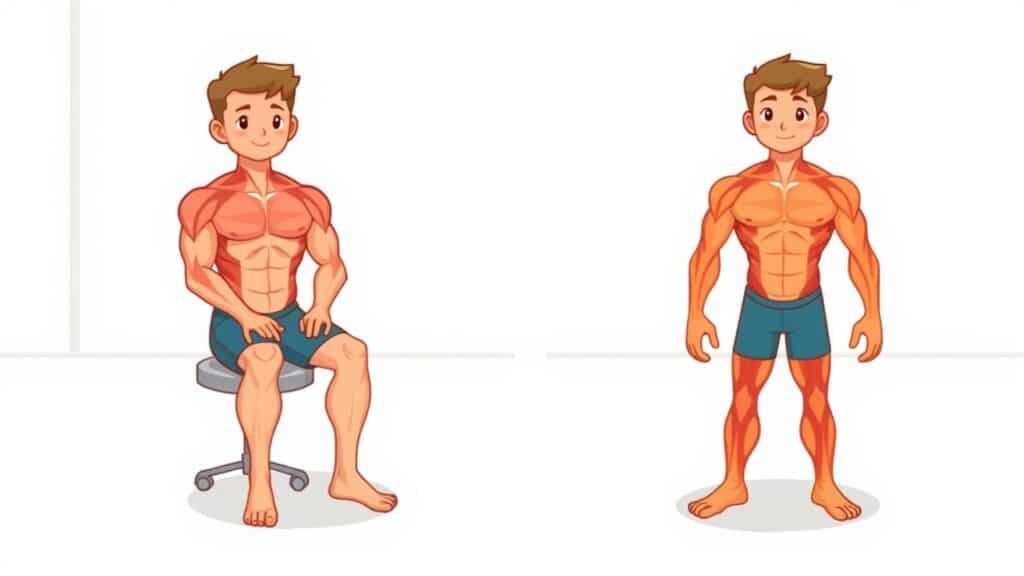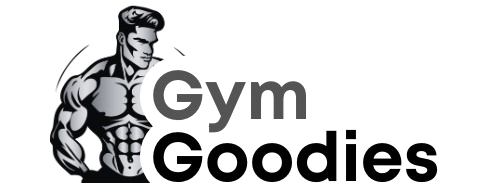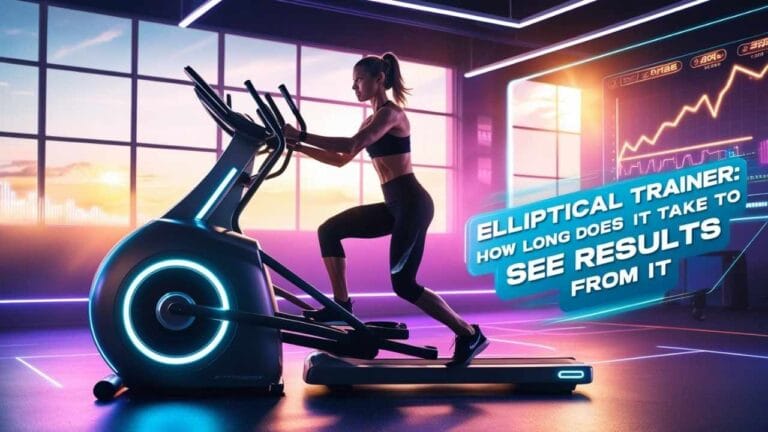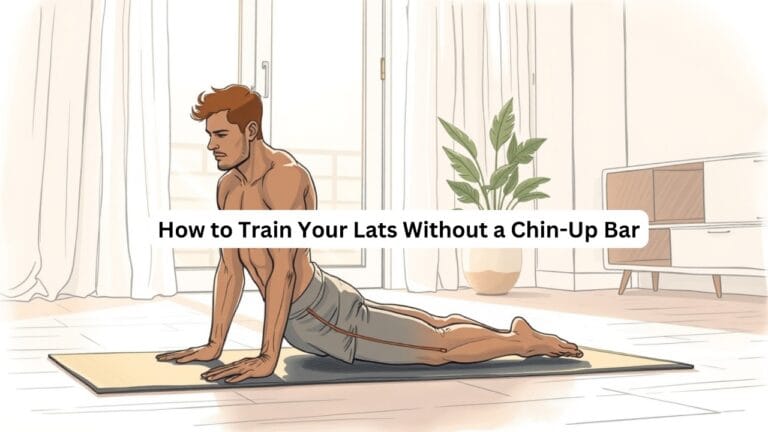Muscles Used for Sitting and Standing: How to Keep Them Strong

Ever feel like sitting all day leaves you stiffer than a wooden board? Or maybe standing for long periods makes your lower back scream in protest? You’re not alone.
The truth is, sitting and standing, two things we do every day, require more muscle engagement than most people realize. And when those muscles weaken, discomfort follows. But here’s the good news: strengthening these muscles isn’t complicated, it just requires the right approach.(YourModernFamily)
In this guide, we’ll break down exactly which muscles keep you stable, why they get weak, and how to fix them (with science-backed tips and real-life success stories). By the end, you’ll move with less pain and more confidence, whether you’re at a desk or on your feet all day.
Related: Age Gracefully with These Powerful Yoga Poses
Why Sitting and Standing Feel Harder as You Age (Hint: It’s Not Just “Getting Older”)
The real issue: Your postural muscles weaken from underuse, not just aging.
Most people blame “getting older” for stiffness and fatigue when sitting or standing. But research shows that sedentary lifestyles accelerate muscle loss far more than age alone. A 2024 study in the Journal of Physiology found that just two weeks of reduced activity led to significant declines in muscle strength, especially in the core and hips.
The Key Muscles You’re Probably Neglecting:
- Hip flexors (help lift your legs when walking or standing up)
- Glutes (keep your pelvis stable when standing)
- Core muscles (not just abs, your deep stabilizers like the transverse abdominis)
- Erector spinae (spinal muscles that prevent slouching)
Client Story: Alison, a graphic designer, thought her back pain was just “part of desk life.” After assessing her posture, we realized her glutes and core were barely engaging—even when standing. Within 4 weeks of targeted exercises, her pain dropped by 70%.
The Hidden Factor Everyone Overlooks: Muscle Coordination
Weak muscles aren’t always the problem, sometimes they’re just “asleep.”
Ever tried to do a squat and felt like your body forgot how to move? That’s not (necessarily) weakness, it’s poor neuromuscular activation. Your brain and muscles need to communicate efficiently. A 2023 study in Sports Medicine found that simple activation drills improved sitting and standing endurance by 30% in sedentary adults.
Quick Test: Are Your Glutes “On”?
- Stand up and squeeze your buttocks as hard as possible.
- Can you hold it for 10 seconds without your thighs or back taking over?
- If not, your glutes need reawakening (try the fix below).
Actionable Tip: Before standing up from a chair, gently engage your core and glutes first. This small habit trains your brain to recruit the right muscles.
Myth Debunked: “Just Stand More” Isn’t the Solution
Standing all day can be just as harmful as sitting, if you’re not strong enough.
The “standing desk trend” promised better health, but without proper muscle endurance, it often leads to lower back pain and swollen feet. Why? Because static postures (whether sitting OR standing) fatigue muscles over time.
Better Approach: Move + Strengthen
- Sitting: Shift positions every 20–30 mins (try a cushion to engage your sit bones).
- Standing: Alternate resting one foot on a low stool to reduce hip strain.
Visual Cue: Think of your core like a corset, it should gently tighten to support you, not just crunch for a six-pack.
Step-by-Step Fix: Stronger Sitting & Standing in 4 Weeks
Follow this sequence to build endurance without overwhelming your body.
Phase 1: Wake Up the Muscles (Week 1–2)
- Glute Bridges (2 sets of 12 reps daily): Teaches glutes to fire.
- Seated Marching (Lift knees alternately while sitting): Activates hip flexors.
Phase 2: Build Stability (Week 3–4)
- Standing Hip Abductions (Hold a chair, lift leg sideways): Strengthens standing muscles.
- Dead Bugs (Lie on back, alternate arm/leg extensions): Deep core engagement.
Pro Tip: If an exercise feels too easy, slow it down. Control > speed.
Final Thoughts
By focusing on strengthening the quadriceps, gluteus maximus, hamstrings, and core muscles, individuals can enhance their ability to sit and stand with ease, promoting independence and quality of life.
Incorporating targeted exercises, flexibility routines, and healthy daily habits into your lifestyle can significantly improve the function of these essential muscles. Remember, consistency is key. Regular practice not only builds strength but also instills confidence in your movements, allowing you to navigate daily activities with greater ease and comfort.
Sitting and standing shouldn’t leave you aching. By targeting the right muscles and practicing mindful movement, you’ll build resilience for daily life.
Key Takeaways:
Weakness isn’t inevitable, it’s often underuse.
Muscle coordination matters as much as strength.
Small, consistent exercises beat occasional intense workouts.
Disclaimer:
It should be remembered that the information available at gymgoodies.net is constantly evolving and is up-to-date and authentic information on fitness, exercises, and health.
I am a veteran bodybuilder, considering I have been active in the industry for quite some time. I ensure that the content shared reflects the lessons I have learned in my years of training and working or all the exposure I have had.
That said, it must be understood that the information available on this portal is obtained through communication channels and is primarily for education and information. Some factors and changes occur, and the issues discussed in this website address such things.
Every piece of advice regarding fitness or health should be taken with caution.
You might need the assistance of fitness professionals, nutritionists, or doctors regarding your workout routine, diet, or fitness activity. Their advice should be personalized PPC, the guide you integrate into your routine, taking into account your specifications and requirements regarding your health and fitness.
This is key, considering our concern is your health and safety. Make sure you only use the data on the site to empower expert advice and nothing more.



